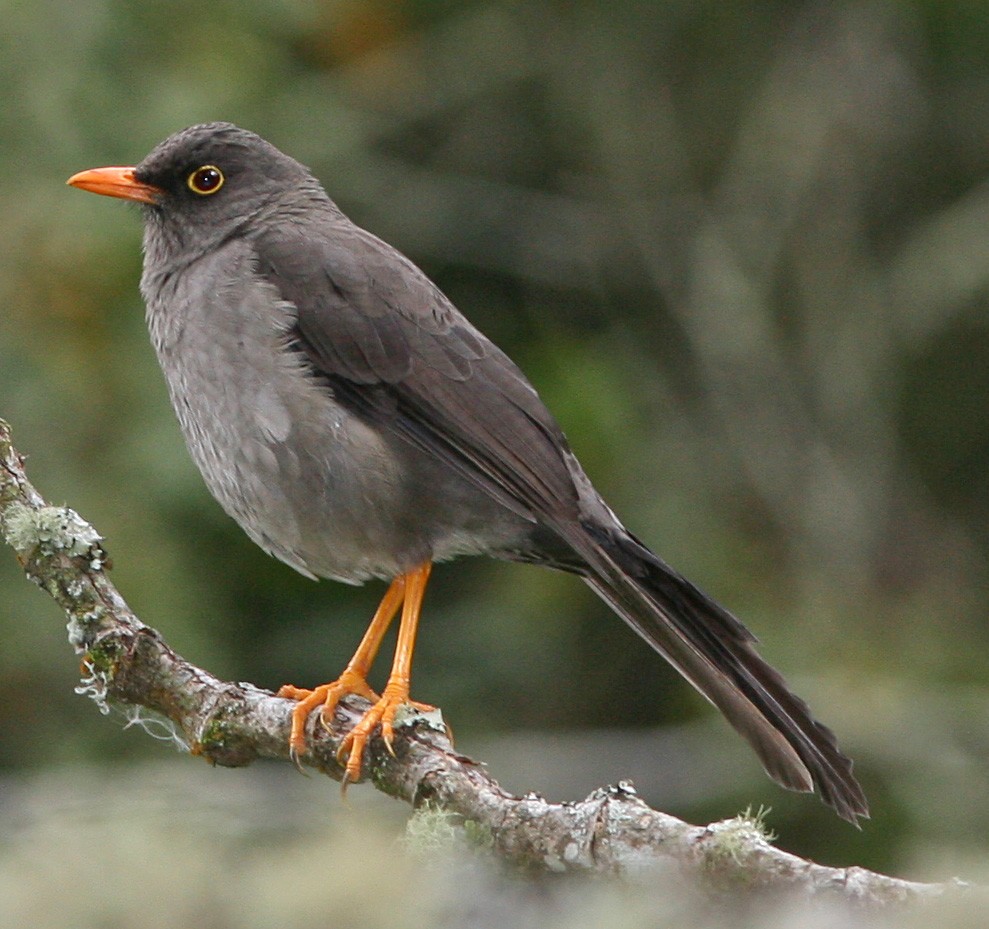Great Thrush
A species of True thrushes Scientific name : Turdus fuscater Genus : True thrushes
Great Thrush, A species of True thrushes
Botanical name: Turdus fuscater
Genus: True thrushes
Content
Description People often ask General Info
Description
Adults are 28 to 33 cm (11 to 13 in) in length and weigh 128 to 175 g (4.5 to 6.2 oz), making the species the largest thrush in South America. Among all thrushes worldwide, the Amami thrush and, in particular, the blue whistling thrush may match or exceed it in size. It can be easily identified by its yellowish-orange beak and legs and yellow ring around the eye. Slight sexual dimorphism is sometimes present, with males having more strongly coloured legs and eye rings. Tail feathers are long. The plumage is black-brown, darker on wings and tail and pale on the belly. Juveniles are predominantly greenish gray with a pale belly and some spots of buff colour on the head and wings. Subspecies show subtle differences in colouration, with T. f. ockendeni being the darkest one, followed by T. f. quindio and T .f. gigantodes. The palest subspecies are T. f. gigas, T. f. cacozelus and T. f. fuscater. Albinistic specimens are known to exist but very rare. 
Size
33 cm
Nest Placement
Tree
Habitat
The great Thrush primarily resides in the Andean highlands' upper reaches, at elevations of 1800–4000 meters. It adapts well to diverse habitats including open forests, urban parks, agricultural areas with trees, and forest remnants. The great Thrush frequents humid montane forest edges, secondary forests, temperate zones, and the fringes of Andean páramo and shrublands, while avoiding dense woods and arid regions.
Dite type
Omnivorous
People often ask
General Info
Feeding Habits
Bird food type
Distribution Area
The species is a typical Andean highlands bird. Its range covers the Andes in western and northern Venezuela as far as Lara and Trujillo, the Andes of Colombia, Ecuador, Peru, and finally, northwest Bolivia. It occurs at altitudes of 1800–4000 meters. The great thrush makes use of a variety of habitats, including open forest, backyards, parks, and even farmland with scattered trees or forest remnants. It also occurs at the edges of different classes of Andean forests, including humid montane, secondary and temperate forests. It is more likely to be found at altitudes above 2000 m. The species tends to avoid dry conditions and densely forested areas, but sometimes occurs on the edges of Andean páramo or in shrublands. It commonly inhabits urban habitats in the highlands, e.g. in Quito and Bogota. Populations are generally sedentary. 
Species Status
The great thrush is common in a variety of habitats throughout its wide range and has been classified as Least Concern by the IUCN. The species readily adapts to anthropogenic disturbances and can make use of urban, deforested or agricultural areas. 
Scientific Classification
Phylum
Chordates Class
Birds Order
Perching birds Family
Thrushes Genus
True thrushes Species
Great Thrush 